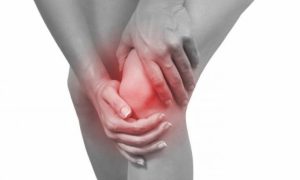Early detection and management of symptoms can prevent arthritis progression and limit joint pain and injury
The umbrella term ‘arthritis’ refers to the joint conditions involving pain, inflammation and mobility restriction of one or more than one joint. This condition is no longer restricted to elderly, rather it affects millions of people globally belonging to all age groups. The most common types of arthritis include rheumatoid arthritis (RA), osteoarthritis (OA) and psoriatic arthritis (PsA).
Dr.Pulak Vatsya, M.B.B.S, M.S., DNB, Consultant sports orthopedics and robotic joint replacement shares the cause of arthritis, symptoms and prevention.
Read More: Preventing Fractures With Osteoporosis: 5 Steps You Can Take Today
Causes of arthritis
- GeneticsRheumatoid arthritis and osteoarthritis are usually seen in those who have a family history. There are specific genes in the body cells that cause autoimmune inflammatory responses and these get inherited from the parents to their children.
- AutoimmunityRA and PsA usually occur when the body’s immune cells directly damage the healthy cells of the body, especially the joints, causing pain and inflammation. Those individuals who are genetically prone to arthritis, can get an immune response triggered following some stress or infection.
- AgingOsteoarthritis progresses with advancing age as the cartilage between the bone joints wears down as the body ages, causing bone to bone rubbing and pain and inflammation. Also genetic inheritance, overweight, obesity and any injury further accelerates OA.
- InjuryAny sports or accidental injury to the joint can damage the cartilage and lead to OA. Also if extra mechanical stress is put on the affected joints such as by heavy weight lifting or repetitive movement, it will lead to more inflammation and pain.
- Overweight and obesityAny individual having more than target weight is more prone to arthritis as extra body weight puts pressure on the hips, knees or spine. So the cartilage of these bones is at a higher risk of wear and tear and fat tissue is responsible for production of inflammatory compounds that trigger arthritis.
- Metabolic disorderCertain metabolic disorders such as gout is a form of arthritis that is triggered by the accumulation of uric acid crystals in the joints.
Read More: Say Goodbye To Lower Back Pain With This Simple Yoga Asana
Symptoms of arthritis
- Joint painThe first and foremost visible sign of arthritis is joint pain which occurs on a particular movement of the joint or if any body part/joint is moved after long inactivity. One characteristic feature of RA is joint stiffness for at least 30 minutes after waking up.
- Swelling and inflammationThe affected joints may feel swollen or red and also generate some heat. In the case of RA or PsA, the immune cells attack the cells of the joint and cause swollen areas.
- Limited movementThe affected joint becomes very hard to move and individuals may face issues even on slightest activity of daily life such as walking, gripping, stretching out arm etc.
- Systemic symptomsRA and PsA are autoimmune arthritis and before joint pain, these arthritis show other systemic responses such as fever, tiredness, loss of appetite etc. These symptoms help in early detection of these types of arthritis.
Read More: World Pneumonia Day 2024: How does pneumonia increases risk of heart attacks and strokes?
Prevention strategies for arthritis
- Weight managementFor dealing with arthritis, body weight should be maintained as extra weight especially on the weight-bearing joints such as knees, hips or spine can trigger arthritis by cartilage breakdown.
- Regular monitoringThose individuals who are at high risk of arthritis such as overweight or obese subjects, those at genetic predisposition, elderly individuals etc. should get regular health check-ups and also certain diagnostic blood tests to measure inflammation. These include ESR (erythrocyte sedimentation rate) and CRP (C-reactive protein).
- Stress managementMost of the autoimmune conditions are related with stress and this makes stress an important causative factor behind both RA and PsA. So for better joint health, engage in yoga, meditation or breathing exercises for alleviating stress.
- Refrain from smoking and drinkingArthritis prevention needs lifestyle modification which includes staying away from smoking and alcohol drinking. Smoking is associated with symptoms worsening and lowered treatment response, while alcohol triggers uric acid accumulation in the joints, thereby leading to gout.
- Anti-inflammatory dietHave a diet rich in omega-3 fatty acids such as nuts and seeds etc., whole grains as well as antioxidants such as berries, green leafy vegetables etc. Such a diet helps to reduce pain and inflammation.
Early detection and management of symptoms can prevent arthritis progression and limit joint pain and injury. Also lifestyle modifications such as physical exercise, healthy diet and cessation of smoking and drinking can prevent arthritis in at-risk group too.





































